Cardiac efficiency and Starling's Law of the Heart
- PMID: 35998082
- PMCID: PMC9826111
- DOI: 10.1113/JP283632
Cardiac efficiency and Starling's Law of the Heart
Abstract
The formulation by Starling of The Law of the Heart states that 'the [mechanical] energy of contraction, however measured, is a function of the length of the muscle fibre'. Starling later also stated that 'the oxygen consumption of the isolated heart … is determined by its diastolic volume, and therefore by the initial length of its muscular fibres'. This phrasing has motivated us to extend Starling's Law of the Heart to include consideration of the efficiency of contraction. In this study, we assessed both mechanical efficiency and crossbridge efficiency by studying the heat output of isolated rat ventricular trabeculae performing force-length work-loops over ranges of preload and afterload. The combination of preload and afterload allowed us, using our modelling frameworks for the end-systolic zone and the heat-force zone, to simulate cases by recreating physiologically feasible loading conditions. We found that across all cases examined, both work output and change of enthalpy increased with initial muscle length; hence it can only be that the former increases more than the latter to yield increased mechanical efficiency. In contrast, crossbridge efficiency increased with initial muscle length in cases where the extent of muscle shortening varied greatly with preload. We conclude that the efficiency of cardiac contraction increases with increasing initial muscle length and preload. An implication of our conclusion is that the length-dependent activation mechanism underlying the cellular basis of Starling's Law of the Heart is an energetically favourable process that increases the efficiency of cardiac contraction. KEY POINTS: Ernest Starling in 1914 formulated the Law of the Heart to describe the mechanical property of cardiac muscle whereby force of contraction increases with muscle length. He subsequently, in 1927, showed that the oxygen consumption of the heart is also a function of the length of the muscle fibre, but left the field unclear as to whether cardiac efficiency follows the same dependence. A century later, the field has gained an improved understanding of the factors, including the distinct effects of preload and afterload, that affect cardiac efficiency. This understanding presents an opportunity for us to investigate the elusive length-dependence of cardiac efficiency. We found that, by simulating physiologically feasible loading conditions using a mechano-energetics framework, cardiac efficiency increased with initial muscle length. A broader physiological importance of our findings is that the underlying cellular basis of Starling's Law of the Heart is an energetically favourable process that yields increased efficiency.
Keywords: Frank-Starling mechanism; cardiac energetics; force-length relation; mechanical efficiency.
© 2022 The Authors. The Journal of Physiology published by John Wiley & Sons Ltd on behalf of The Physiological Society.
Figures

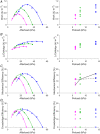
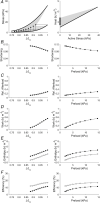

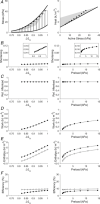

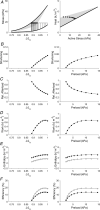
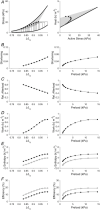
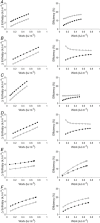

References
-
- Ait‐Mou, Y. , Hsu, K. , Farman, G. P. , Kumar, M. , Greaser, M. L. , Irving, T. C. , & Tombe, P. P. (2016). Titin strain contributes to the Frank‐Starling law of the heart by structural rearrangements of both thin‐ and thick‐filament proteins. Proceedings of the National Academy of Sciences, USA, 113(8), 2306–2311. - PMC - PubMed
-
- Anderson, R. L. , Trivedi, D. V. , Sarkar, S. S. , Henze, M. , Ma, W. , Gong, H. , Rogers, C. S. , Gorham, J. M. , Wong, F. L. , Morck, M. M. , Seidman, J. G. , Ruppel, K. M. , Irving, T. C. , Cooke, R. , Green, E. M. , & Spudich, J. A. (2018). Deciphering the super relaxed state of human β‐cardiac myosin and the mode of action of mavacamten from myosin molecules to muscle fibers. Proceedings of the National Academy of Sciences, USA, 115(35), E8143‐E8152. - PMC - PubMed
-
- Asanoi, H. , Sasayama, S. , & Kameyama, T. (1989). Ventriculoarterial coupling in normal and failing heart in humans. Circulation Research, 65(2), 483–493. - PubMed
Publication types
MeSH terms
LinkOut - more resources
Full Text Sources

